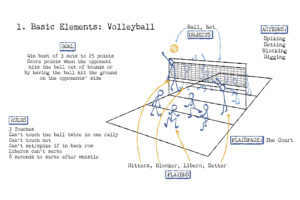
- Swapping the Minesweeper playspace (a digital gridded minefield) for a Dungeons and Dragons board:
A swap like this would enhance the experience of other kinds of fun that draw people to games, specifically fantasy and sensation. When I play minesweeper traditionally, challenge and submission are big draws for me: being able to detangle the field and identify the location of all bombs is a very satisfying challenge to complete (which makes it even more painful/engaging when I hit a mine), and I’m usually playing the game on a flight or in the car to pass the time. However, bringing elements to from a Dungeons and Dragons board could make the game feel more lived in. Instead of a more mechanical/logic-based activity of trying to identify pitfalls, I’m roleplaying a character or creature that is actively trying to avoid mines/booby traps in life threatening scenarios. This perhaps changes the emotional journey through the game and provides a different kind of fun.

- Turn based – Connect 4 state logs:
- Player 1 places their red colored token into one of the 7 x 6 grid play space
- Player 2 slots their yellow-colored token into an adjacent spot
- This is repeated until one of the players achieves four tokens in a row.
The play space and goal of the game constrain the space of possibilities with respect to where each player can place their token. While the play space is a 7×6 grid, the build up nature of the game is such that not all 42 slots can be slotted at the same time. In other words, at the beginning of the game only the 7 slots at the bottom of the grid can be filled. In turn two, the 6 empty slots in row 1, and the one slot in row 2 directly above the filled slot in row 1 can be filled. As the game progresses, the space of possibilities shifts as the play space is filled but remains constant in size in that there are 7 positions where a token can be slotted. When one factors in the goal of trying to get four tokens in a row and the players competing, the space of possibilities evolves. Now, not all 7 slots are equally as likely to be filled as players try to build and block each other.
Real Time – Competitive/Professional Tag
- Two players are stationed at opposite ends of the ring that is filled with obstacles.
- The timer starts and player one chases player two around the obstacles in hopes of tagging them.
- This continues until player two is tagged or the timer runs out.
The space of possibilities, while constrained by the play space (the bounds and obstacles mean that there is a limited range of areas where player 2 can run to, to avoid being tagged), is shaped to a certain extent by the strategy that player 2 employs. Player 1 chases player 2 around with the goal of tagging them and the space of possibilities of where that tagging can happen evolves based on where player 2 decides to run to avoid capture. Player 1 can also alter the possibility space in that they chose a strategy where they are directly running behind player 1 hoping they’re fast and agile enough around the obstacles to catch up. Or player 1 could decide to take an alternate path that is somewhat shorter in hopes of cutting off and catching player 2 before the timer runs out. The timer also imposes some constraints on the space of possibilities in that in the allotted time, there are a large (but not infinite) range of realistic approaches given the time restraint, and this only shrinks as the time runs down.



